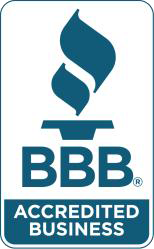
Saving money just feels good, right? It can be invigorating when you’ve found a great deal on something, and the larger discount, the more pleased you are. It’s a little too easy, then, to make the cost your main criteria, to always go for the least expensive option, to let your coupons make your consumer choices for you. But chasing a bargain when it comes to buying hearing aids can be a big mistake.
Health repercussions can result from going for the cheapest option if you require hearing aids to manage hearing loss. Preventing the development of health issues like depression, dementia, and the risk of a fall is the entire point of using hearing aids in the first place. The key is to find the hearing aid that best suits your lifestyle, your hearing needs, and your budget.
Tips for finding affordable hearing aids
Affordable is not the same thing as cheap. Affordability, as well as functionality, are what you should be looking for. That will help you find the most ideal hearing aid possible for your individual budget. These are helpful tips.
Tip #1: Research before you buy: Affordable hearing aids are available
Hearing aids have a reputation for putting a dent in your pocketbook, a reputation, though, is not always reflected by reality. Most hearing aid makers will partner with financing companies to make the device more affordable and also have hearing aids in a variety of prices. If you’ve started exploring the bargain bin for hearing aids because you’ve already resolved that really good effective models are out of reach, it could have significant health repercussions.
Tip #2: Ask what’s covered
Some or even all of the cost of hearing aids may be covered by your insurance. Some states, in fact, have laws mandating insurance companies to cover hearing aids for children or adults. Asking never hurts. If you’re a veteran, you may be eligible for hearing aids through government programs.
Tip #3: Your hearing loss is unique – choose hearing aids that can calibrate to your hearing needs
In some ways, your hearing aids are similar to prescription glasses. Depending on your sense of style, the frame comes in a few options, but the exact prescription differs considerably from person to person. Similarly, hearing aids may look alike cosmetically, but each hearing aid is calibrated to the individual user’s hearing loss needs.
You’re not going to get the same results by grabbing some cheap hearing device from the clearance shelf (or, in many cases, results that are even remotely helpful). These amplification devices increase all frequencies rather than raising only the frequencies you’re having a hard time hearing. Why is this so significant? Hearing loss is usually irregular, you can hear some frequencies and sounds, but not others. If you boost all frequencies, the ones you have no trouble hearing will be too loud. Simply put, it doesn’t really solve the problem and you’ll end up not using the cheaper device.
Tip #4: Not all hearing aids have the same features
It can be tempting to believe that all of the modern technology in a good hearing aid is simply “bells and whistles”. But you will need some of that technology to hear sounds properly. The specialized technology in hearing aids can be dialed in to the user’s level of hearing loss. Many modern designs have artificial intelligence that helps block out background noise or communicate with each other to help you hear better. Also, choosing a model that fits your lifestyle will be easier if you factor in where (and why) you’ll be using your hearing aids.
That technology is crucial to compensate for your hearing loss in a healthy way. A tiny speaker that turns the volume up on everything is far from the sophistication of a modern hearing aid. Which brings up our last tip.
Tip #5: An amplification device is not the same thing as a hearing aid
Okay, say this with me: A hearing aid is not the same thing as an amplification device. If you get nothing else from this article, we hope it’s that. Because hearing amplification devices try very hard to make you think they work the same way as a hearing aid for a fraction of the price. But that simply isn’t true.
Let’s have a closer look. An amplifier:
- Takes all sounds and turns up their volume.
- Supplies the user with little more than basic volume controls (if that).
- Is typically made cheaply.
A hearing aid, on the other hand:
- Will help you maintain the health of your hearing.
- Can minimize background noise.
- Is tuned to amplify only the frequencies you have difficulty hearing.
- Can identify and boost specific sound types (like the human voice).
- Can achieve maximum comfort by being shaped to your ear.
- Has the ability to change settings when you change locations.
- Is adjusted specifically to your hearing loss symptoms by a highly qualified hearing professional.
- Has batteries that are long lasting.
Your hearing deserves better than cheap
Regardless of what your budget is, that budget will determine your options depending on your overall price range.
That’s why we often emphasize the affordable part of this. The long-term benefits of hearing aids and hearing loss management are well documented. This is why an affordable solution is where your attention should be. Don’t forget, cheap is less than your hearing deserves.”
The content of this blog is the intellectual property of MedPB.com and is reprinted here with permission.
The site information is for educational and informational purposes only and does not constitute medical advice. To receive a personalized free hearing test and hearing loss consultation, call today to set up an appointment.









